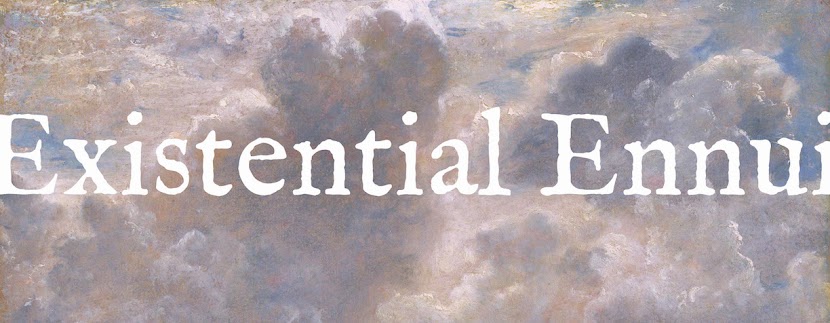Do authors know when they've written a duff book? Kingsley Amis was in little doubt that he had with I Like it Here (1958), later calling it "a very slipshod, lopsided piece of work". Patricia Highsmith certainly knew she had with A Game for the Living (1958), describing it (in Plotting and Writing Suspense Fiction) as "the one really dull book I have written". And of A Thirsty Evil (1974), P. M. Hubbard wrote (to the wife of his friend and fellow novelist Alan Kennington) "...it's not one I'm very keen on myself".
I'm a lot keener on A Thirsty Evil than Hubbard was, but I'd be interested to find out what he thought of The Tower. Chances are he would have been as self-effacing about it as he was all his novels – "they are not very good books," he wrote in a letter to critic Tom Jenkins, although he did concede they were "beautifully written" – but in the case of The Tower, he would have had a point.
Published by Geoffrey Bles in 1967 under a stark, strident dust jacket designed by Donald Green (also to be found, naturally, in the Existential Ennui Beautiful British Book Jacket Design of the 1950s and 1960s gallery), The Tower was Hubbard's fifth novel for adults, and the first of three to be issued by Bles (Hubbard's chief publisher to this point had been Michael Joseph). It's also, I think, Hubbard's weakest novel (at least of those that I've read, which is well over half). As one would expect of the author, it's nicely written in that detached, wry, almost arch manner of his, and additionally it boasts some divertingly off-piste word choices – a "bedizened" here, a "pargeted" there. But it lacks either the intensity of A Hive of Glass (1965) or The Holm Oaks (1965), or the charm and vigour of Flush as May (1963) or Picture of Millie (1964).
I wonder if it's the setting that lets the thing down – not in the sense that it's not an intriguing place in and of itself, because it is, at least mildly so: a fictional English village, Coyle, where one night a year the locals build a pyre and parade around with flaming torches held aloft (remind you of anywhere...?). No, it's more the lack of that main character in so many of Hubbard's novels, the British countryside, or rather a discombobulating rustic locale or unusual and unnerving feature of that countryside. For the most part Hubbard confines himself here to Coyle, and so that feeling of a somehow dangerous rurality is missing from the book, although Hubbard tries to counter that by making the eponymous bell tower of St. Udan's church the focus of such action as there is, and at least introduces a superficial sense of unease in the shape of the pyre atop the "tump" (shades of The Wicker Man there).
It doesn't help that Hubbard's lead, John Smith, who lands in Coyle as a result of car trouble, prosaically – and thus appositely – enough, is a rather less tortured soul than others of the author's protagonists. Certainly he's bewitched by a wayward woman, as is the wont of Hubbard's males, but only marginally so, and soon comes to his senses anyway, finding himself a more orthodox romantic interest instead. Hubbard admitted in a subsequent letter to Tom Jenkins that "places mean more to me than people", and it's true that in most of his novels the place is usually more memorable than any of the people; but even by that measure John Smith is an unengaging creation. Perhaps that's why Hubbard named him so: an ordinary name for an ordinary character – albeit one who prompts the odd amusing moniker-related line (for instance, "...he felt an overpowering urge to tell her that he really was John Smith. Someone had to be") – leading an ordinary – but still readable – book.
An earlier review of The Tower can be found over at The Passing Tramp.




I've heard a lot of negative opinions of this one. Personally, I disagree: it's true that the setting is not Hubbard's most striking, but the village is still atmospheric, the psychological undercurrents kept me interested, and the quiet reversal of the final pages is stunning (can't think of anything similar in the genre, in fact - but that goes for much of Hubbard, anyway). Actually I think of this as 'The Wicker Man' in reverse, with Sergeant Howie as the villain, as it were.
ReplyDeleteI don't think it's a bad book so much as underwhelming, especially in comparison to some of the other Hubbards I mentioned. Funny you should mention The Wicker Man – I made a note to that effect when I was reading The Tower, and it does seem to prefigure elements of that film; although I've just noticed the novel that The Wicker Man was based on, David Pinner's Ritual, was published in the same year as The Tower, so it looks as though Hubbard and Pinner were simply ploughing the same furrow. Then again, you could say Hubbard got there first with Flush as May.
DeleteI'd forgotten that there was a source novel. Actually I find that Anthony Shaffer insists that the book was useless and his story ended up being completely original. But the chronological coincidence is certainly interesting.
Delete